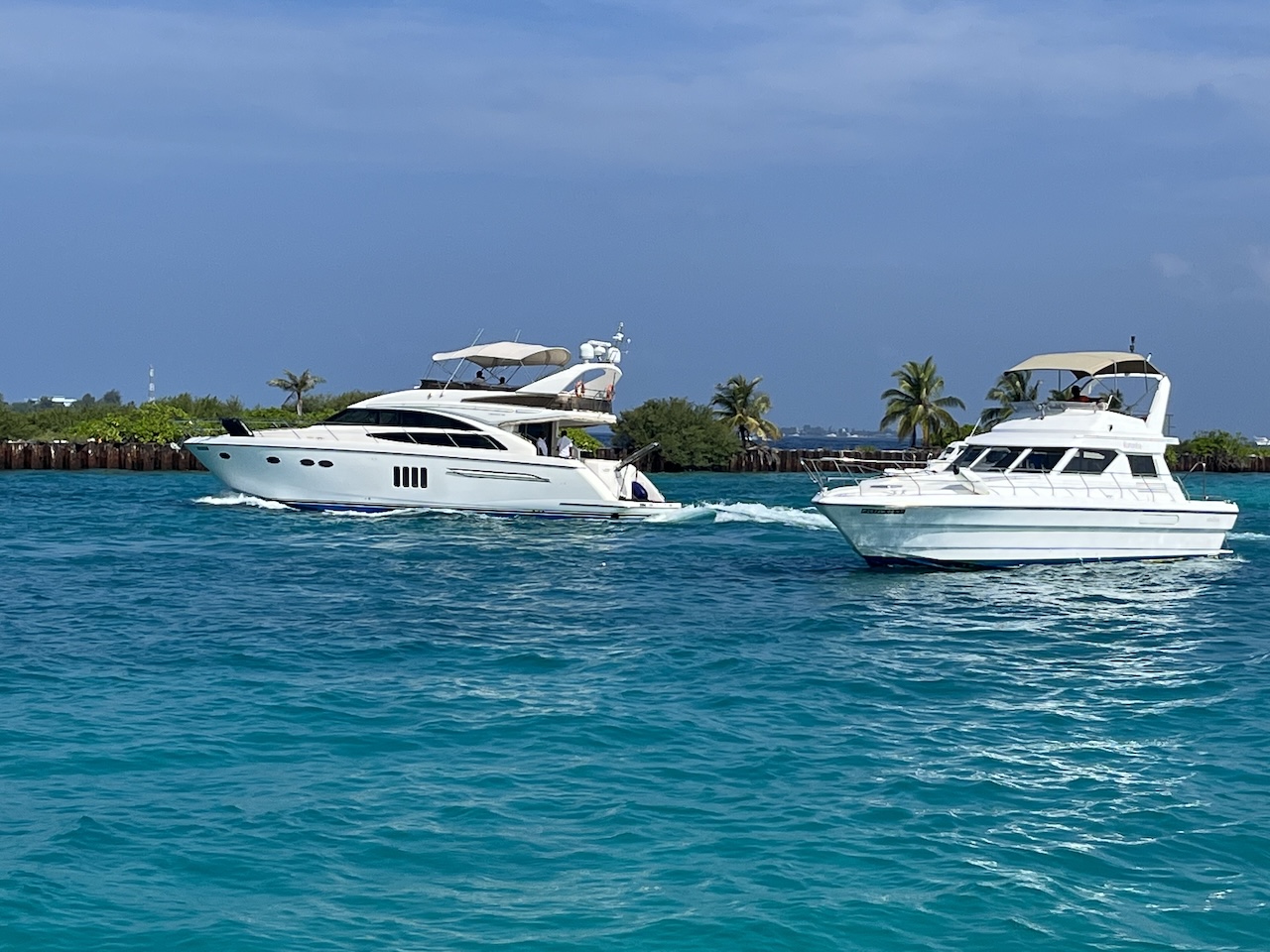Flybridge yacht

Why Flybridge Yachts are good to drive.
Driving a flybridge yacht is a unique experience, largely due to its elevated helm position, which provides exceptional visibility—a key advantage over other yacht designs like express cruisers or sport yachts. The flybridge helm, typically situated 10 to 20 feet above the waterline depending on the yacht’s size, offers a commanding 360-degree view of the surroundings. This height is particularly beneficial when navigating busy waters, such as during the Monaco Grand Prix in Port Hercule (happening this week, May 23–25, 2025 - https://oldseadogs.com/news/formula-1-monaco-grand-prix-2025/ ), where yachts crowd the harbour. The unobstructed sight lines allow captains to spot other vessels, buoys, and obstacles like floating debris far earlier than from a lower helm, reducing the risk of collisions and enhancing safety.
The elevated position also improves situational awareness during docking, a notoriously tricky manoeuvre in tight marinas. For example, docking a 50-foot flybridge yacht in a bustling spot like Wroxham on the Norfolk Broads becomes more manageable when you can see the entire length of the vessel and its proximity to the quay. The flybridge helm is often equipped with advanced navigation tools—think Raymarine chart-plotters, VHF radios, and bow thruster controls—mirroring the lower helm for seamless operation. On larger models, joystick controls, like those found on Azimut or Princess yachts, make handling a breeze, even for less experienced drivers, allowing precise movements in confined spaces.
Flybridge yachts also excel in handling and stability, thanks to their hull designs. Most feature planing or modified-V hulls, optimised for cruising speeds of 20–30 knots, with some models like the Ferretti 670 hitting 32 knots. The deep draft and wide beam—averaging 16 to 20 feet—provide a stable platform, reducing roll in choppy waters like the Solent during Cowes Week (August 2–8, 2025). Twin diesel engines, typically ranging from 800 to 2,000 horsepower, deliver the power needed for long-range cruising, while the weight distribution, despite the higher centre of gravity, is carefully balanced to maintain seaworthiness. However, smaller flybridge yachts under 40 feet can feel top-heavy in rough seas, so size and hull design are critical considerations.
Visibility While Driving
Visibility is where flybridge yachts truly shine. The elevated helm offers an unparalleled vantage point, often likened to standing on a rooftop deck. From this height, a captain can see over smaller boats, spot distant hazards, and monitor the yacht’s wake, which is crucial for adjusting speed in no-wake zones or crowded anchorages like those near the Amalfi Coast during a summer charter. The 360-degree view also aids in spotting marine life—imagine cruising the Caribbean post-hurricane season (November to April) and catching sight of dolphins off Virgin Gorda from the flybridge.
The flybridge helm is typically designed with ergonomics in mind, featuring wraparound windshields or hardtops for weather protection, though smaller models may lack full enclosures, exposing drivers to the elements. On luxury models like the Princess F55, visibility is enhanced by large glass panels and minimal obstructions, with digital displays providing real-time data on wind speed, depth, and radar. For sport-fishing flybridge yachts, such as those from Grady-White, the elevated position doubles as a lookout for fish, with anglers using the height to scan for birds or baitfish schools—a tactic often employed during tournaments in the BVI.
However, visibility can have drawbacks. The height can make low bridges a challenge—yachts over 50 feet often have a 15- to 20-foot air draft, requiring careful route planning in areas like the Norfolk Broads, where Wroxham Bridge has a clearance of just 2.2 meters. Night driving also demands extra caution, as the elevated position can make it harder to judge distances to unlit objects, though modern LED lighting and thermal cameras on brands like Sunseeker mitigate this.
Flybridge Yacht Manufacturers
Several manufacturers dominate the flybridge yacht market, each bringing distinct strengths:
Azimut Yachts (Italy):
Known for sleek, modern designs, Azimut’s flybridge range, like the Azimut 60 (59 feet, 1,150 HP), combines Italian craftsmanship with tech like IoT dashboards. Prices start around $1.5 million.
Princess Yachts (UK):
Based in Plymouth, Princess offers luxury flybridge models like the F55 (57 feet, 1,800 HP), known for performance and elegance, costing $2–$3 million new.
Sunseeker International (UK):
Poole-based Sunseeker, a favourite at events like Cowes Week, produces flybridge yachts like the 76 Yacht (77 feet, 2,400 HP), blending speed (32 knots) and luxury, priced at $4 million.
Ferretti Yachts (Italy):
Ferretti’s flybridge models, such as the Ferretti 670 (67 feet, 2,400 HP), emphasize opulent design and tech, with prices around $2.5 million.
Prestige Yachts (France):
Part of Groupe Beneteau, Prestige offers models like the 590 (61 feet, 1,200 HP), balancing affordability and luxury at $1.8 million.
Sea Ray (USA):
Under Brunswick Boat Group, Sea Ray’s flybridge line, like the 520 Fly (52 feet, 1,200 HP), caters to the mass market, starting at $1.2 million. Flybridge yachts, with their superior visibility, versatile driving experience, and luxurious amenities, remain a top choice for those seeking to elevate their time on the water in 2025, whether cruising the Mediterranean or racing in the Solent.










